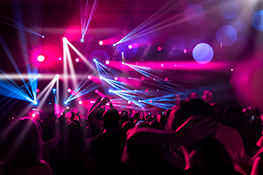Understanding the Fundamentals of Stage Lighting
Stage lighting is more than just illuminating a stage; it’s a powerful storytelling tool that shapes emotion, directs attention, and enhances the overall theatrical experience. This guide will take you from novice to knowledgeable, covering everything from basic principles to advanced techniques. We’ll explore the different types of fixtures, color mixing, and how to create specific moods and effects.
Types of Stage Lighting Fixtures: A Comprehensive Overview
The world of stage lighting fixtures is diverse. Understanding their capabilities is crucial. We’ll delve into the specifics of:
- Fresnels: Known for their soft, even light distribution, perfect for highlighting actors and scenery.
- Ellipsoidals (Lekos): Offering precise control over beam shape and size, ideal for sharp gobos and intricate lighting designs.
- Par Cans: Simple and robust, these are often used for washes and backlighting.
- LED Par Cans: Energy-efficient and versatile, offering a wide range of color options and dimming capabilities.
- Moving Heads: These automated fixtures offer dynamic movement and precise control, creating stunning visual effects.
- Profile Spotlights: Similar to ellipsoidals but with a different lens system, often offering a wider range of beam angles.
We’ll examine the advantages and disadvantages of each type, helping you choose the right fixtures for your specific needs and budget.
Color Mixing and Gel Filters: Mastering the Art of Color
Color is a vital component of stage lighting. We’ll explore the intricacies of color mixing, using additive and subtractive color methods. Understanding how different color gels interact is key to creating specific moods and atmospheres. This section will cover:
- Additive Color Mixing: How different colored lights combine to create new colors.
- Subtractive Color Mixing: Using gel filters to modify the color of light.
- Color Temperature: Understanding Kelvin (K) and its impact on the feel of your lighting design.
- Gel Selection and Application: Tips and tricks for choosing the right gel and applying it correctly.
Lighting Design Techniques: From Basic to Advanced
This section will walk you through the process of designing effective and impactful lighting schemes. We’ll cover various techniques, including:
- Motivated Lighting: Using light to mimic natural light sources.
- Three-Point Lighting: A fundamental technique for illuminating a subject effectively.
- Backlighting: Creating depth and separation.
- Side Lighting: Adding texture and dimension.
- Special Effects Lighting: Using gobos, color changes, and movement to create dramatic effects.
Working with Lighting Consoles and Software: Controlling the Show
Modern stage lighting relies heavily on sophisticated control systems. We’ll explore the basics of using lighting consoles, both manual and computer-controlled. This section will provide a foundational understanding of:
- Basic Console Functions: Faders, channels, and submasters.
- Programming Cues: Creating and sequencing lighting states.
- Software Options: Exploring popular lighting control software.
- Troubleshooting Common Issues: Addressing technical problems and finding solutions.
Safety and Maintenance: Ensuring a Safe and Efficient Lighting System
Safety is paramount in any stage lighting setup. We’ll cover essential safety practices and maintenance procedures, including:
- Safe Handling of Lighting Equipment: Proper procedures for setup, operation, and breakdown.
- Regular Maintenance: Keeping your lights in top working condition.
- Electrical Safety: Preventing electrical hazards and ensuring compliance with safety regulations.
Advanced Lighting Techniques and Special Effects
For those seeking to elevate their skills, this section explores advanced techniques and special effects, including:
- Advanced Color Mixing Techniques: Creating complex and subtle color palettes.
- Gobo Projection: Creating patterns and textures with gobos.
- Moving Light Programming: Mastering the intricacies of moving head fixtures.
- Creating Atmospheric Effects: Using haze and fog machines effectively.
Conclusion: Illuminating Your Creative Vision
Mastering stage lighting is a journey, not a destination. By understanding the principles and techniques outlined in this guide, you’ll be well-equipped to create compelling and memorable lighting designs for any production. Remember to practice, experiment, and let your creativity shine!


 Auditorium Construction Services
Auditorium Construction Services 